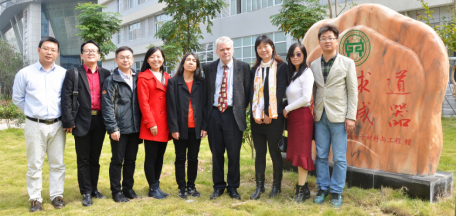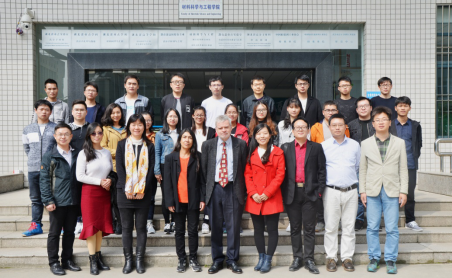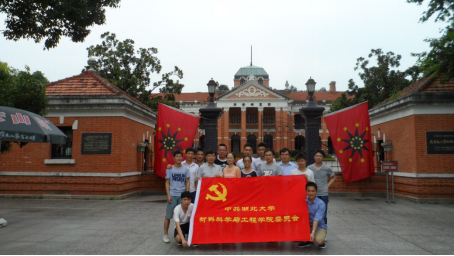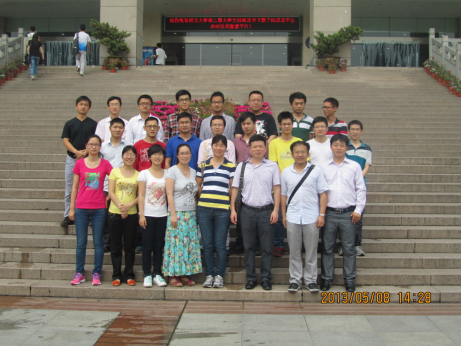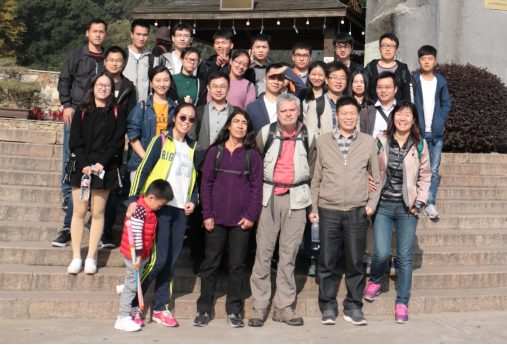1、Profile of Homewood & Gao’s group
Prof. Homewood & Gao group’s research interest mainly includes but is not limited to energy storage and conversion materials/devices and inorganic nonmetallic materials, such as metal oxide gas sensing materials/devices, metal oxide photoelectric-photovoltaic materials/devices, the fourth generation (4G) new type solar cells, silicon-based semiconductor photovoltaic materials/devices, efficient recyclable photocatalytic materials, multi-ferric materials, superconducting materials and ceramic pigments.
The group leaders are Prof Kevin Peter Homewood and Professors Gao Yun who are closely collaborating with professor Huang Zhongbing and Prof G. Shao at the cutting-edge of these topics. The group is composed of 5 professors, 4 lecturers and 1 technician. Four of the professors are doctoral supervisors, and the other is a master’s supervisor. Over the past years, our team has been sponsored by various funding bodies including the National Natural Science Foundation of China (NSFC), the Ministry of Education, the Natural Science Foundation of Hubei Province and the Education Department of Hubei Province. The group has published more than a hundred peer-reviewed research papers and has 10 Chinese patents. More than fifty postgraduates and 5 PhD students have been working in the group in different disciplines.
2、Brief Introduction to Group Members

Prof. Kevin Peter Homewood, PhD supervisor.
Email: k.homewood@surrey.ac.uk; k.homewood@hubu.edu.cn
Professor Kevin Peter Homewood, started his research career within the Department of Electrical Engineering at the University of Manchester and obtained his PhD in 1981. He subsequently spent a period as a Research Fellow at the University of Hull in the Department of Physics. He was appointed as lecturer in Optoelectronics in the Department of Electronic and Electrical Engineering at Surrey in 1984 and was promoted directly to Reader in Semiconductors in 1994 and then to Professor of Semiconductor Optoelectronics in 1999. At Surrey he had established world-class facilities in electronic and optical characterization of semiconductors and an active personal research group, which he led for more than 30 years. He has recently concentrated on developing novel approaches to silicon based optoelectronics and this work is recognized to be world leading in many areas.
Professor Homewood is an acknowledged world expert in semiconductor materials and devices and has published more than 220 papers in international scientific journals, including two papers in NATURE that have stimulated international research efforts in semiconducting silicides and silicon optoelectronics. These two papers alone have received more than 1000 citations. He was awarded a prestigious five year European Research Council Advanced Investigator Grant (SILAMPS) of around £ 2,000,000 to develop silicon based lasers and optical amplifiers and two follow up European Research Council proof of concept grants He was a cofounder and a Director of Si-Light Technologies Ltd. In 2015, he was awarded the 2015 Royal Society Brian Mercer Award for Innovation with a sponsorship of £245,298 to develop Mid-Infrared Silicon Photodetectors, AS a prinicipal or co-investogator he has raised research funding of about £ 21,000,000 to date. He is a member of grant awarding panels of the Royal Society’s Research Grant Panel and has been a member of grant awarding panels of the European Research Council. He was frequently invited to referee and evaluate projects and provide expert opinions by national and international funding bodies, including EPSRC (UK), Royal Society (UK), European Research Council, DTI (UK), Hong Kong UGC (Hong Kong), Canadian Research Council, Science Foundation Ireland (Ireland), Irish Research Council (Ireland), Technical Foundation (Netherlands), FOM (Netherlands), Research Corporation (USA), A “Star” (Singapore), Irish academy of Sciences, Finnish academy of Sciences, US Department of Energy.
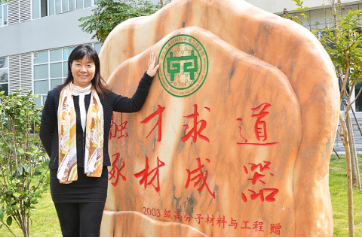
Prof. Gao Yun, PhD supervisor and Deputy Dean of the School of Material Science & Engineering
Email: gaoyun@hubu.edu.cn
Prof Yun Gao is Deputy Dean of the School of Materials Science and Engineering. She obtained her Ph.D. from the Chinese University of Hong Kong (CUHK). She is the Deputy Director of the Ministry-of-Education Key Laboratory for the Green Preparation and Application of Functional Materials and a council member of Hubei Electronic Microscopy Society. She is a panel member for National Natural Science Foundation of China (NSFC), for both general and key projects. She is now the reviewer of many international journal including Adv. Mater., ACS advance, Mat. Res. Bull etc. Her current research interest is mainly in the optical-electrical and photocatalytical applications of wide band gap metal oxides, silicon based and related semiconductors. Her research has been sponsored by 5 NSFC projects and another 10 projects from the British New Scientist Network Project, the Key Project of the Ministry of Education, Research and Development Project of Hubei Provincial Science and Technology Department, the Natural Science Foundation of Hubei Province, Chenguang Plan of Wuhan etc. She has been granted 5 Chinese patents, she has published more than 40 peer-reviewed research papers. She has been awarded the third prize of natural science of Hubei Province.
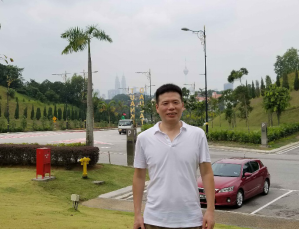
Prof. Huang, PhD supervisor, Visiting Professor of Beijing Computational Science Research Center
Email: huangzb@hubu.edu.cn
Prof Zhongbing Huang is Professor of Materials Simulation at the Faculty of Physics and Electronic Technology, Hubei University. He obtained his Ph.D. from the Chinese University of Hong Kong (CUHK) in 2002. He then worked as a Postdoctoral Research Fellow in Wuerzburg University, Germany. His current research interest is mainly on condensed matter physics and computational materials, including the design and physical properties of high temperature superconductosr, organic ferromagnetics, multi-ferroic materials and other correlated electron system materials. Prof. Huang is also a long-term visiting professor of Beijing Institute of Computing Science. His research is now funded by an NSFC project, Funding for Abroad Researcher from the Educational Ministry, Doctoral Program of Educational Ministry. He has published more than 50 SCI research papers in Phys. Rev. Lett., Phys. Rev. B, Appl. Phys. Lett., J. Appl. Phys. and other international journals. He has been awarded the second prize of Natural Science of Hubei Province and the Young Scientist Award of the Eighth Youth Science Award in Hubei province.

Prof. Shao, PhD supervisor
Prof G. Shao is Director of the State Center for International Cooperation on Designer Low-carbon & Environmental Materials, Zhengzhou University. He obtained his PhD in materials science at the University of Surrey in 1995 and then worked as a Research Fellow and Senior Research Fellow, until transferring to Brunel University as Reader in Materials in 2005. He joined the University of Bolton as Professor of Materials Modeling and Simulation in 2007. In 2010, he started work in Zhengzhou University. Prof. Shao’s major research interests include the multi-scale material simulation, design of smart materials, the fabrication of new multi-functional materials/devices and high-resolution electron microscopy analysis. In recent years, Prof. Shao has mainly focused on new renewable energy materials and photovoltaic devices. Prof. Shao has published more than 130 research articles in Nature, Acta Materialia, Applied Physics Letters and other peer reviewed journals. He has been granted a number of international patents. He is also the founder and director of Zhengzhou Materials Genome Institute, a company established to exploit renewable energy materials and photovoltaic devices.
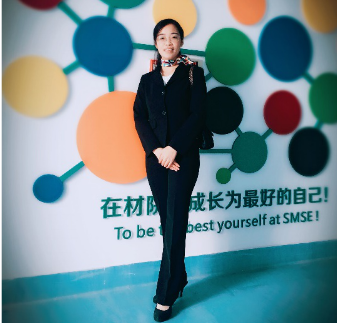
Xia Xiaohong, Professor, Master Supervisor
Email: xhxia@hubu.edu.cn
Dr Xiaohong Xia is a Professor at the School of Materials Science and Engineering at Hubei University. She received her PhD degree from the Huazhong Normal University in 2007 and then joined Hubei University as a lecturer. She worked at the University of Bolton as a visiting scientist and then worked as a postdoctoral research fellow in 2010–2011. Her research work has been sponsored by the Youth and General Fund of NSFC, the Youth Project of the Department of Ministry of Hubei Province, the Cooperative Project with Zhengzhou University and others. She is also a co-investigator of various NSFC projects, the Key Project of Chinese Educational Ministry, the International Cooperation Project of the Science& Technology department of Hubei Province, the International Cooperation Project of Bolton University. She has published over 20 SCI papers in the Journal of Power Source, Sensors and Actuator B, ACS Appl. Mater. Interfaces, Acta Materialia,and other international journals. She has applied for or been granted 7 Chinese Patents. Her current research interest is design and fabrication of functional semiconductor materials and devices.

Bao Yuwen, Lecturer
Email: baoyw83@126.com
Bao Yuwen is now lecturer at the School of Materials Science and Engineering. He obtained his Master’s degree from Hubei University majoring in Microelectronics and Solid Electronics. Mr Bao’s main research field is the design of CMOS analog and digital-analog mixed integrated circuits, in which area he has rich experience. The chips he designed are mainly used in LED drivers, power management, clock calendar and so on. Six of his chips have been produced in large scales. At present, Mr Bao mainly focuses on the research and development of high-voltage AC/DC and DC/DC power management chips.

Wang Yu, Ph. D. Lecturer
Email: wyu@hubu.edu.cn
Dr Wang Yu obtained his PhD degree from the University of Science and Technology of China, where he majored in Material Physics and Chemistry, in 2015. He is now a lecturer at the School of Materials Science and Engineering, Hubei University. Dr Wang’s research area is photochemical catalysis and electrochemical storage, in which he mainly focuses on the fabrication of multiple 2D nano-sheets and their composites, and their applications in photocatalytic water splitting and lithium ion batteries. Dr Wang has participated in the ‘863’ plan of China and several projects funded by NSFC. By now, Dr Wang has published several papers in ACS Applied Materials & Interfaces, Journal of Materials Chemistry A, Nanoscale and other international SCI journals.
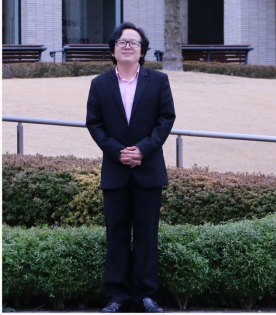
Lei Binglong, Ph. D. Lecturer
Email: mengpiaoling520@163.com
Dr Lei Bing Long is currently a lecturer at Hubei University. He obtained his bachelor degree from Wuhan University of Technology in 2008 and doctors degree from South China University of Technology in 2013. He then worked as a postdoctoral researcher fellow in the Aichi Institute of Technology, Japan and joined Hubei University in Dec. 2015. Dr Lei’s main current research fields are conventional inorganic non-metallic materials, ceramic pigments, new-type solar cells and new environmentally friendly coatings and. Dr Lei participated in several sub-projects funded by the ‘893’plan and ‘973’ plan of China. Now He is managing a project funded by NSFC, and also cooperates with companies in Jiangxi and Guangdong Provinces. In recent years, Dr Lei has published several papers in the Journal of Physical Chemistry letters, Journal of the American Ceramic Society, Dyes and Pigments and some other international SCI journals.
Chen Xuxing, Lecturer
Email: cxx0613@hubu.edu.cn
Dr Chen Xuxing is now a lecturer at the School of Materials Science and Engineering at Hubei University. He received his PhD degree from Central China Normal University. He was a joint educational PhD student in Fujian Institute of Research on the Structure of Matter, Chinese Academy of Sciences. His research focuses on synthesis of nano-materials for applications such as photocatalysis, electrocatalysis and thermal catalysis. He has been awarded several prizes such as the outstanding PhD graduates of Central China Normal University, the excellent doctoral dissertation award of Central China Normal University, and the first prize of outstanding PhD graduates of Fujian Institute of Research on the Structure of Matter, Chinese Academy of Sciences. Up to now, He has published 13 papers in international journals such as Nature Communications, ACS Catalysis, Chemistry of Materials, Journal of Materials Chemistry A, ACS applied materials & interfaces, Chemical Communications, Chemical Engineering Journal, Chemistry-A European Journal, Physical Chemistry Chemical Physics, Crystal Growth & Design. He has applied for one Chinese patent.
Li Rong, laboratory assistant
Email: rli@hubu.edu.cn
Li Rong, laboratory assistant, obtained her doctoral degree from State Key Laboratory of Structural Chemistry, Fujian Institute of Research on the Structure of Matter, Chinese Academy of Sciences. Her research focuses on the synthesis of crystalline porous materials and their application in proton conduction, photoluminescence and magnetism. Up to now, 15 papers have been published in international journals such as Chemistry of Materials、Inorganic Chemistry, Journal of Materials Chemistry C, Crystal Growth & Design and Chemical Engineering Journal. She has participated in national natural science foundation and major research projects of the national fund committee.
3、Researches & Academics
Silicon and Silicide based LED and photo detector
Professor Kevin Homewood has been working in the area of Si based light emitting materials and Si based photo detectors. He has found a route to near- and mid-infrared in silicon with a new band edge modified (BEM) rare earths (RE) technology. This new functionality opens up major new applications for silicon. Direct involvement of the bulk band state continua with the RE rather than single starting states give much greater optical emission, and also absorption rates - key to efficient detectors. BEM-REs interact directly with the bands enabling extrinsic detectors. Wavelengths that could be detected using BEM-RE doped silicon photodiodes cover the near-IR from 1.1 μm out to the mid-infrared. At 80 K, the normal temperature for infrared detectors beyond 2 μm we have shown spectral detectivities up to 6 μm as good as current state-of-the-art detectors. We have shown that our devices can detect ambient levels of greenhouse gases such as carbon dioxide. Near-, mid- and far-infrared RE doped silicon photodetectors could completely displace mercury cadmium telluride (MCT), the only high performance detectors currently available for the 5.5 to 12 μm range, and offer a much cheaper alternative to current materials in the 2 to 6 μm region. Currently both MCT and our silicon detectors operate at 77 K but, because of the intrinsic low leakage current silicon has a real opportunity to operate at room temperature.
LEDs operating up to room temperature in the eye safe 2.2 μm region - possible applications are surgical and medical diagnostics, free space LIDAR and optical wireless. The invention of a new technology - Dislocation Engineering, demonstrating a room temperature operating LED in silicon with comparable efficiencies to GaAs devices using entirely conventional ULSI processing. A demonstrator light emitting electroluminescent device using Si/β-FeSi2 structures was successfully fabricated that emits at 1.5 μm and operates at room temperature. The device is robust and importantly can be fabricated using essentially conventional ULSI compatible processing technology. The initial work was published in NATURE (NATURE, 387, 686-688, 1997) and is patented worldwide.
Super-conducting Materials
Due to its important application in the field of advanced technology such as energy, information and quantum devices, superconducting material has been a hot research topic in physics and material science. Since the superconducting critical transition temperature as high as 18K was found in potassium doped picene organic molecular crystals in 2010, aromatic hydrocarbon organic superconductors have attracted increasing research interest from condensed matter physicists.
Although a variety of aromatic hydrocarbon superconductors have been synthesized, low superconducting shielding fraction and poor stability of the crystals have hindered the further development of the organic hydrocarbon superconductor. Furthermore, the relevant theoretical basis is still very poor. The goal of our research is to optimize the experiment scheme and the analysis method, to explore the growth law of organic superconductor, and to search for new aromatic hydrocarbon organic superconducting materials.
Gas Sensors Based on Metal Oxide Nanofilms
As important industry source materials, many kinds of gas such as CO,H2S,NO2,NO,H2 have the disadvantage of being toxic or explosive, which would cause serious safety issues during their application. It is thus of great importance to develop gas sensors with high sensitivity for gas leakage detection or concentration determination in a quantitative and selective way. In addition, low working temperature, low cost, low detection limit, fast response, stable performance are also required.. Functional materials with suitable structure and proper surface states are the key component of a gas sensor. Metal oxide (SnO2, ZnO, Fe2O3 and TiO2, etc.) based thin film gas sensors have the advantage of easy fabrication, low cost, good stability and simplicity. Up to now, we have developed a TiO2 based hydrogen sensor with low working temperature, high sensitivity, low detection limit and fast response. We are currently continuing the optimization of H2 sensing TiO2 thin films, designing and fabrication of the H2 sensor device and extending the sensor performance of TiO2 thin films to other environmental gases. We are also working on better understanding of the underlying physics of these materials and devices.
Advanced Novel Inorganic Materials
This research direction is mainly related to inorganic powder materials, high-performance ceramic pigments, advanced inks used for ceramic ink-jet printing, energy-saving and environmental protection coatings for exterior walls and structures. By optimizing conventional preparation methods, exploring new materials and new preparation methods, it is feasible to achieve the controllable synthesis of powder materials and inorganic pigments in the 50-20,000 nm range, so that the environmental protection, stability in medium/high temperature and thermal durability can be improved and the advanced application of traditional powder materials and pigments can be promoted. Now, our main researches in pigment materials are the high temperature stable and ultrafine inorganic bright-colored red CdSxS1-x@ZrSiO4 materials, stable red Ce2S3 materials, anti-infrared nanopowder and inorganic phosphor materials. Moreover, we also hope to explore new green and environmental friendly materials.
Photo-catalysis for H2 Production
Nowadays, with the rapid depletion of fossil fuels (coal, natural gas, and petroleum oil), the development of renewable energies based on sufficient energy sources with sustainable supply for the long term is in high demand. Ever increasing attention has been paid to exploring novel methods for developing renewable energy technologies. Conversion of solar energy into chemical energy in the form of so called ‘solar fuels’, such as H2, methanol, methane, etc., is considered as one of the most promising strategies to solve the energy and environmental problems in the future.
As one of the earliest studied n-type semiconductor photocatalysts, TiO2 has been widely used in environmental purification, self-cleaning, H2 production, photosynthesis, CO2 reduction, organic synthesis, solar cells, etc. We are aiming at developing TiO2 and TiO2-based photocatalysts and revealing the mechanisms of the photocatalytic reactions, as well as design and synthesis of more efficient photocatalysts and systems.
The 4G Novel Solar Cells
Our group provides a good research platform for preparation of high-quality solar cell films, such as a wide choice c of materials (i.e. Electron transport materials ETM, hole transport material HTM, light-absorbing materials, etc.), optimizing and test condition of solar cells. By now, we have accumulated a wealth of experience in the preparation, influence factors and mechanisms of Pb-based solar cells, which will be a good foundation for follow-up work. We have made progress in R&D of Pb-based (i. e. MAPbX3) and non-Pb-based (i.e. Bi-Perovskite) high performance thin film solar cells.
4、Equipment
Labs Name |
Instrument Name |
Materials Preparation Lab |
Molecular Beam Epitaxy (MBE) and magnetron sputtering deposition system Plasma enhanced chemical vapor deposition (PECVD) system Vacuum tube furnace RTP-500Fast annealing furnace ZHD-300M2 high vacuum evaporation coating machine |
Chemical Laboratory |
Etelux-Lab2000 glove box KQ-250DE ultrasonic cleaning machine Constant temperature magnetic stirrer SC-3610 low speed centrifuge KW-4A vacuum drying oven Z02-OAB electrothermal constant temperature drying box Aquaprince ultrapure water system |
Testing laboratory |
UV-3600 UV-vis spectrophotometer (with integrating sphere) Keithley 4200 Semiconductor Parameter measure system Olver Nano atomic force scanning probe microscopy (AFM) ZDF-II Hydrogen sensing system Solar energy testing system Variable temperature photoluminescence testing system Shimadzu GC-2018 Gas Chromatograph Variable temperature laser Raman testing System |



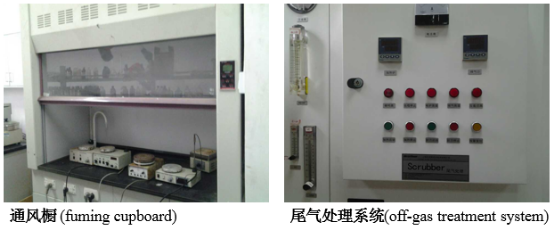
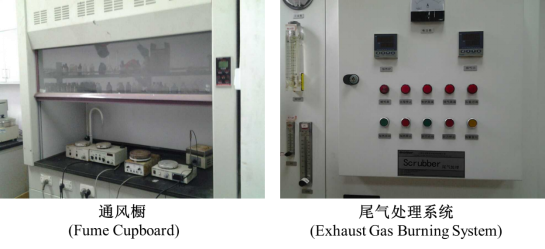
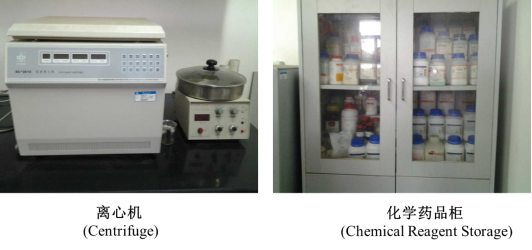
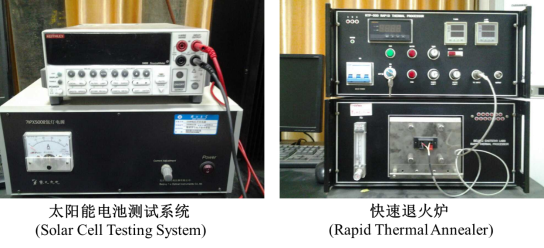
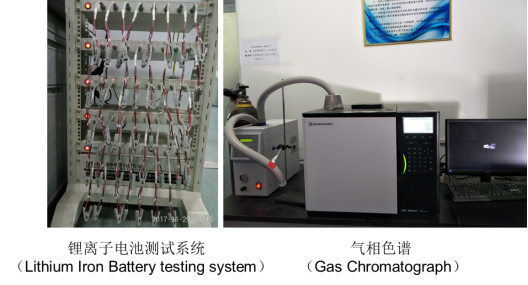
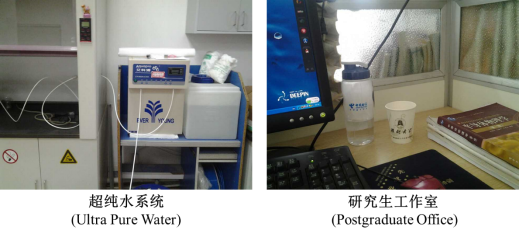
5、Research Outputs
(1) Publication list
1. Control of interface between anatase TiO2 nanoparticles and rutile TiO2 nanorods for efficient photocatalytic H2 generation, Xiaohong Xia, Shuai Peng, Yuwen Bao, Yu Wang, Binglong Lei, Zhuo Wang, Zhongbing Huang**, Yun Gao*, Journal of Power Sources 376 (2018) 11-17, IF: 6.395, DOI:10.1016/j.jpowsour.2017.11.067
2. High-Quality (CH3NH3)3Bi2I9 Film-Based Solar Cells: Pushing Efficiency up to 1.64%, Zheng Zhang, Xiaowei Li, Xiaohong Xia, Zhuo Wang, Zhongbing Huang, Binglong Lei*, and Yun Gao**, J. Phys. Chem. Lett, 2017, August 25, (8), 4300-4307. IF9.353, DOI: 10.1021/acs.jpclett.7b01952
3. Novel quantum dot and nano-sheet TiO2 (B) composite for enhanced photocatalytic H2 Production without Co-Catalyst, Jingjing Si, Yu Wang***, Xiaohong Xia, Shuai Peng, Ying Wang, Shuying Xiao, Lingbin ZhuYuwen Bao, Zhongbing Huang, Yun Gao*, Journal of power source, 360 (2017) 353-359, June-6. IF: 6.395, DOI:10.1016/j.jpowsour.2017.06.021
4. Room temperature multiferroicity in hydrogenated triapentafulvalene and pentaheptafulvalene oligomers, Hui Yang, Zhongbing Huang*, Yun Gao*, and Haiqing Lin, J. Chem. Phys., 2017-2-24, 146 (8): 13. IF: 2.89, DOI:10.1063/1.4976993
5. Remarkable absorbability enhancement of TiO2 through surface modification by LiF, Xiaohong Xia, Zhuo Wang, Hao Liu, Dafeng Yu, YuwenBao, Yun Gao*, Science of Advanced Materials, 2017, 9, 555-561. IF: 1.81.
6. A hydrogen sensor based on orientation aligned TiO2 thin films with low concentration detecting limit and short response time, Xiaohong xia, Wenxi Wu, Zhuo Wang, Yuwen Bao, Zhongbing Huang, Yun Gao*, Sensor and actuat. B: Chemical 234 (2016) 192-200. IF: 4.758. DOI:10.1016/j.snb.2016.04.110
7. Complex doping chemistry owing to Mn incorporation in nanocrystalline anatase TiO2 powders,Meilan Guo, Yun Gao*, Guosheng Shao, Physical Chemistry Chemical Physics, 18, 2818-2829 , 2016. IF: 4.449. DOI: 10.1039/C5CP05318H
8. Deposition of Visible Light Active Photocatalytic Bismuth Molybdate Thin Films by Reactive Magnetron Sputtering, Marina Ratova*, Peter J. Kelly, Glen T. West, Xiaohong Xia* and Yun Gao, Materials, 2016-1-15, 9(2), 67. IF: 2.654. doi:10.3390/ma9020067
9. Superconductivity of potassium-doped p-terphenyl, Gao Yun, Wang Ren-Shu, Wu Xiao-Lin, Cheng Jia, Deng Tian-Guo, Yan Xun-Wang, Huang Zhong-Bing , Acta Physica Sinica, 65, 077402 (2016)/钾掺杂对三联苯的超导特性探寻,高云,王仁树,邬小林,程佳,邓天郭,闫循旺,黄忠兵,Acta Physica Sinica, 65, 077402 (2016)。IF:0.677
10. Density Functional Theory Study on the Effect of LiF on anatase TiO2(101), Zhuo Wang, Xiaohong Xia, Hao Liu, YuwenBao, Yun Gao*,Journal of Nanoscience and Nanotechnology, 16, 739-743 (2016) IF:1.338.
11. Well-aligned CuO nanowires detached from Cu foil by a simple Contact Printingmethod, Zhen Wang, Ye Wang, Yao Wen, Xiaohong Xia*, YuwenBao, Yun Gao, Optical and Quantum Electronics, 47, 2095–2102 (2015), IF: 1.290.
12. Xiaoping Han, Kenan Song, Liu Lu, Quanrong Deng, Xiaohong Xia, G. Shao, Limitation and extrapolation correction of the GGA+U formalism: a case study of Nb-doped anatase TiO2, J. Mater. Chem. C, 2013, 1, 3736-3746.
13. Liu Lu, Xiaohong Xia, J K Luo and G Shao, Mn-doped TiO2 thin films with significantly improved optical and electrical properties, Journal of Physics D - Applied Physics, 45, p 485102, 2012.
14. Meilan Guo, Yun Gao*, Xiao-Hong Xia, Guowen Jiang, Quan-Rong Deng, G. Shao, Self-aligned TiO2 thin films with remarkable hydrogen sensing functionality, Sensors and actuators B, 2012, 171–172, 165.
15. Xiaohong Xia, Liu Lu, Alex S. Walton, Michael Ward, Xiaoping Han, Rik Brydson, Jikui Luo, and Guosheng Shao, Origin of significant visible-light absorption properties of Mn-doped TiO2 thin films, Acta Materiallia, 2012, 60 (5), 1974-1985.
16. Deng, QR; Han, XP; Gao, Y*; Shao, GS, Remarkable optical red shift and extremely high optical absorption coefficient of V-Ga co-doped TiO2, J. Appl. Phys. 2012,112, 013523.
17. Lin Wan, Yun Gao, Xiao-Hong Xia, Quan-Rong Deng, G. Shao, Phase selection and visible light photocatalytic activity of Fe-doped TiO2 prepared by the hydrothermal method, Materials Research Bulletin, 2011, 46(3), 442-446.
18. Y. Gao, H. W. Liu, Y. Lin, G. Shao, Computational design of high efficiency FeSi2 thin-film solar cells, Thin Solid Films,2011, 519, 8490-8495..
19. Q.R. Deng, X.H. Xia, M.L. Guo, Y. Gao and G. Shao, Mn-doped TiO2 nanopowders with remarkable visible light photocatalytic activity, Materials Letters, 2011, 65(13), 2051-2054.
20. G. Shao, Y. Gao, X.H. Xia,M. Milosavijevic, Crystallographic characteristics and fine structures of semiconducting transition metal silicides, Thin Solid Films, 2011, 519(24), 8446-8450.
21. Y. Zhang, Y. Gao, X.H. Xia, Q.R. Deng, M.L. Guo, L. Wan, G. Shao, Structural engineering of thin films of vertically aligned TiO2 nanorods, Materials Letters, 2010, 64, 1614-1617.
(2) Patents
1) A nanostructured TiO2 composite photocatalyst, Application number: 201611074933, Application time: 2016.11.30, Applicant: Gao Yun, Peng Shuai, Xia Xiaohong, Publication number: CN106622198A, 2017. 05. 10.
2) A composite photocatalyst and its preparation method, Application number: 201710551947.5, Application time: 2017-07-07, Applicant: Wang Yu, Si Jingjing, Gao Yun, Publication number: CN107199038A, 2017. 09. 26.
3) An Anatase phase and TiO2(B) composite nanostructure titanium dioxide photocatalyst and its preparation method, Application number: 2016111576659, Application time: 2016.12.14, Applicant: Gao Yun, Si Jingjing, Wang Yu, Publication number: CN106807344A, 2016. 12. 14.
4) A Method for preparation of barium strontium titanate nanoparticles modified titanium dioxide thin film hydrogen sensor, Application number: 201610864969. Application time: 2016.9.29, Applicant: Xia Xiaohong, Deng Mengjie, Gao Yun, Huang Zhongbing, Wang Zhuo, Publication number: CN106525914A, 2017. 3. 22.
5) A Method for the fabrication of methylamino bismuth lead iodide perovskite crystal as the optical absorption material. Application number: 201610046544.0. Application time: 2016.1.25, Applicant: Gao Yun, Deng Tianguo, Cheng jia, Huang Zhongbing. Publication number: CN105820055A, 2016. 8. 3.
6) Registration certificate for design of integrated circuit layout, IC004, Patent No.BS.165513128, Bao Yuwen, Xu Yao, Gao Yun. Granted in 2016.7.18.
7) The crystal and preparation method of potassium-doped p-terphenyl, Gao Yun, Wang Ren-Shu, Wu Xiao-Lin, Yan Xun-Wang, Huang Zhong-Bing, Chinese Invention Patent, Patent Number: ZL201510055398.3, Application Date: 2015. 02. 03; Publication date :2017. 6. 22.
8) Fabrication of a TiO2 based H2 sensor, Gao Yun, Wu Wenxi, Xia Xiaohong, Chinese Invention Patent, Patent No.: ZL 2015100374521. Application Date: 2015-01-26, Granted date: 2017. 8. 22.
9) The hydrothermal method for fabrication of vertically oriented anatase TiO2 films and the application of the TiO2 films in hydrogen sensor, Gao Yun, Guo Meilan, Xia Xiaohong, Jiang Guowen, Shao Guosheng, Chinese Invention Patent, Patent No.: ZL 2015100374521. Granted date: 2014. 08. 06.
10) A method for the fabrication of PV device with a dual optical absorption layer and a PIN structure, Chinese Invention Patent, Patent No.: ZL201310048593. Gao Yun, Guo Meilan, Xiao Yongyue, Xia Xiaohong, Shao Guosheng, Granted date: 2015. 07. 08.
11) A preparation method for renewable recyclable lithium fluoride modified titanium dioxide nano catalyst, Chinese Invention Patent, Patent Number: ZL2013103014764, Xia Xiaohong, Liu Hao, Yu Dafeng, Gao Yun, Granted date: 2015. 8. 26.
12) A method for the preparation of single crystal TiO2 nanorod array thin films. Chinese Invention Patent, Patent No. ZL200910272253.3, Gao Yun, Xia Xiaohong, Zhang Yong, Deng Quanrong, Shao Guosheng. Granted date: 2011. 05. 11.
(3) Funds
1) Theoretical studies of charge order in high temperature cuprate superconductor. National Natural Science Foundation of China, General Program, 11674087, ¥620, 000. 2017.1-2020.12.
2) Crystal growth and physical properties of alkali metal doped phenanthrene aromatic hydrocarbon superconductors. National Natural Science Foundation of China, General Program, 11574076. ¥900, 000. 2016.01.-2019.12.
3) Preparation of the core-shell submicro–micro heterocrystal Zr-based pigment in non-water solvent system, National Natural Science Foundation of China, Youth Program, 51602096. ¥200, 000. 2016.01.-2019.12.
4) Leader training plan of High talents in Hubei Province. Science and Technology Department of Hubei Province. ¥1000, 000. 2013.1-2017.12.
5) Investigation of Photoelectric Properties of V-Ga Co-doped TiO2 Photo-absorbing Materials and the Devices. National Natural Science Foundation of China, General Program, 11374091. ¥950,000, 2014.01-2017.12.
6) Surface design and gas sensing property of oriented TiO2 nano thin film. National Natural Science Foundation of China, General Program, 11274100. ¥950,000. 2013.01-2016.12.
7) Theoretical studies on organic superconductors of polycyclic aromatic hydrocarbons. National Natural Science Foundation of China, Cultivation Project of Major Research Plan 91221103. ¥700, 000. 2013.1-2015.12.
8) Theoretical studies of magnetic and superconducting properties in multi-band Hubbard model. National Natural Science Foundation of China, General Program, 1174072. ¥580, 000. 2012.1-2015.12.
9) 2014 International Symposium on nanoscale technology and new energy materials, National Natural Science Foundation of China. Special 11410301001. ¥60,000 2014.4-2014.5
10) Research on Photoelectric Properties of Nb-V Co-doped TiO2 Transparent Conducting Thin Films. National Natural Science Foundation of China. General Program, 11344005. ¥180,000. 2014.01- 2014.12.
11) MnTiO2/TiO2 homojuntion nanoarray thin film and its photoelectrical property. National Natural Science Foundation of China. Youth Program, 11004051. ¥220, 000. 2011.01.-2013.12.
12) Intensive study on the interaction of two energy scales and electron-phonon interaction in high temperature cuprate superconductor. National Natural Science Foundation of China, General Program, 10974047. ¥340, 000. 2010.1-2012.12.
13) Theoretical studies on electron-phonon interaction in high temperature cuprate superconductor. National Natural Science Foundation of China, General Program, 10674043. ¥290, 000. 2007.1-2009.12.
14) Fundamental study of Oxide Heterojunction as Photovoltaic Core Absorbing Layer Materials and its Basic Application. Ph.D. Programs Foundation of the Ministry of Education of China, 20134208110005. ¥120,000. 2014.1-2016.12.
15) Research on Metal Oxide Heterojunction Thin Film Solar Cells. Key Scientific Projects of the Ministry of Education of China, 211108. ¥100,000. 2011.1-2013.12.
16) Development of a new type of Si-based thin film photovoltaic cell. Research and Development Program of the Science and Technology Department of Hubei Province, 2011BAB032. ¥200,000. 2011.01-2012.12.
17) Research on a Novel TiO2 Nano Array based Inorganic, Low Cost and High Efficiency Solar Cell. Key project of the Science and Technology Department of Hubei Province, 2010CDA024. ¥100,000. 2010-2012.
18) Design and Application of Low Cost, High Efficiency and Full Spectrum Absorption Solar Cells. International Cooperation Project of the Science and Technology Department of Hubei Province, 2009BFA009. ¥100,000. 2009-2011.
(4)International Cooperation
Our group has a close cooperation with Bolton University (the UK), the University of Surrey (the UK), University of Leeds (the UK), Manchester Metropolitan University (the UK), Aichi University (Japan), University of Zhengzhou (PRC).
6、To Young Researchers
Our group focuses on the-research described above. We are constantly making efforts to extend our new research projects. We welcome bachelors and masters students who aspire to become science researchers to join us.
Welcome to join us!
Photos of us
